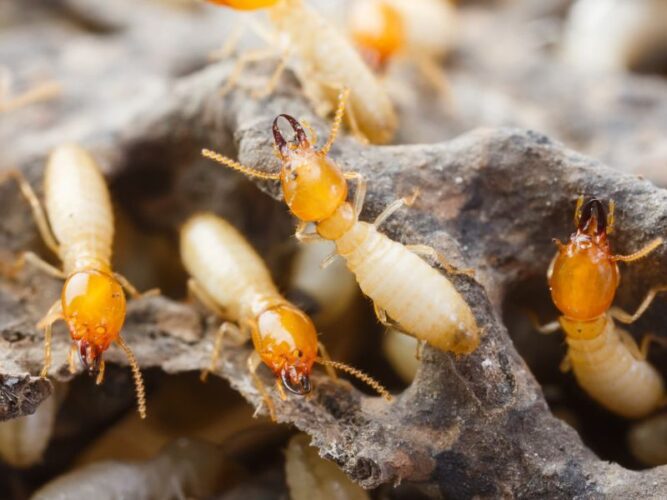Termites are one of the most destructive pests that can infest your home or business. They can cause severe structural damage to your property by feeding on wood and other cellulose materials.
According to the US Environmental Protection Agency (EPA), termites cause billions of dollars in damage every year and property owners spend over two billion dollars to treat them.
Therefore, it is important to identify and control termites as soon as possible to prevent further damage and costly repairs.
There are different types of termite treatments available depending on the extent and location of the infestation, the type of termites involved, and your personal preferences. In this article, we will discuss some of the most common termite treatment methods and their advantages and disadvantages.
Liquid Soil-Applied Termiticides
This is the most common technique for treating termite infestations. It involves applying a liquid chemical called a termiticide to the soil around and under the foundation of your property.
The termiticide creates a barrier that prevents termites from entering or leaving the structure. Termites that come into contact with the treated soil die or are repelled.
Some of the benefits of liquid soil-applied termiticides are:
- For many years, you won’t have to worry about termites.
- They are adaptable to any soil and structure.
- They can be used in combination with other termite treatment methods
The disadvantages of liquid termiticides applied to soil include:
- In order to inject the termiticide, holes must be drilled into the walls and flooring.
- If not used properly, they can degrade soil and water.
- They may not be effective against some types of termites that can avoid or bypass the treated soil.
Termite Baits
This is another popular technique for treating termite infestations. It involves placing bait stations containing a slow-acting toxicant around the perimeter of your property.
The bait stations attract foraging termites that feed on the bait and share it with their nestmates. Over time, the toxicant kills the entire colony or reduces its population.
Some of the benefits of termite baits are:
- They are less invasive and disruptive than liquid soil-applied termiticides
- They are more environmentally friendly and pose less risk to humans, pets, and wildlife
- They can target specific termite species and colonies
Some of the drawbacks of termite baits are:
- They may take longer to eliminate the termite infestation than liquid soil-applied termiticides
- They may not be effective against some types of termites that do not feed on the bait or have multiple colonies
- They require regular monitoring and maintenance to ensure the bait stations are functioning properly
Building Materials Impregnated with Termiticides
This is a preventive technique for protecting your property from termite infestations. It involves using building materials such as wood, concrete, or steel that have been treated with a termiticide during the construction or renovation process.
The termiticide impregnates the material and acts as a deterrent or a poison for termites that try to attack it.
Some of the benefits of building materials impregnated with termiticides are:
- They provide long-term protection against termites for the lifespan of the material
- They do not require any additional application or treatment after installation
- They can enhance the strength and durability of the material
- Some of the drawbacks of building materials impregnated with termiticides are:
- They may be more expensive and less available than untreated materials
- They may not be compatible with some types of construction or design
- They may not be effective against some types of termites that can penetrate or avoid the treated material
Wood Treatments
This is another preventive technique for protecting your property from termite infestations. It involves applying a wood preservative or a wood protector to the surface or interior of wooden structures such as furniture, cabinets, or flooring. The wood treatment prevents termites from feeding on or damaging the wood.
Some of the benefits of wood treatments are:
- They are easy and inexpensive to apply and maintain
- They can improve the appearance and quality of the wood
- They can be used on existing or new wooden structures
Some of the disadvantages of wood treatments are:
- They may not provide complete protection against termites that can access untreated areas or gaps in the wood
- They may wear off or degrade over time and require reapplication
- They may contain harmful chemicals that can affect the health of humans, pets, and plants
Conclusion
Termites are a serious threat to your property and should be dealt with promptly and effectively. There are different types of termite treatments available that can help you prevent or control termite infestations. Each termite treatment method has its own advantages and disadvantages that you should consider before choosing the best option for your situation.
You should also consult a professional pest control service that can provide you with expert advice and assistance on termite treatment. HiCare is one of the leading pest control providers in India that offers safe, effective, and affordable termite control services.

